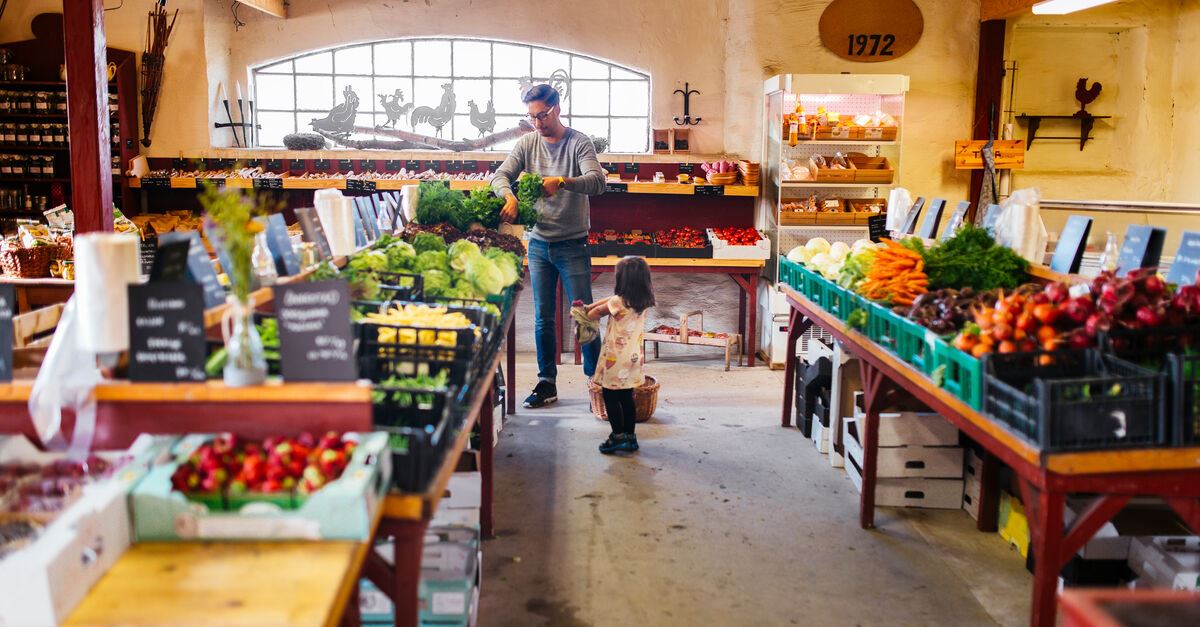As we start to move out of lockdown towards the so-called ‘new normal’ of life after coronavirus, how we work and how our businesses operate will change for the foreseeable future.
The UK Government has released a series of guidance documents on how to work safely during the coronavirus pandemic, which contain the most up to date information. Here, AXA’s summarises the government guidance so your shop is COVID-secure and ready to open safely.
When can my shop reopen?
The guidance for non-essential retailers is different across the devolved administrations of the UK. Visit the UK Government, Scottish Government, Welsh Government and Northern Ireland Assembly for the most up to date information.
Getting ready to reopen
In the present crisis, new guidelines and extra safety measures must be followed before it’s safe to open your doors to customers. There are no grounds for departing from the minimum legal standards or your legal duty to do everything reasonably practicable to make the workplace safe for customers and employees.
It’s important to review your working activities before restarting any work through a COVID-19 Compliance Risk Assessment. This means looking at your shop’s working areas, layout and customer footfall and considering what’s required to enable your employees and customers to stay at a safe distance.
Review all the areas of your work activity and look for contact points between you, any employees and any members of the public. Think about how these contact points can be avoided or minimised, if these can be managed within the social distancing guidelines, and whether additional Personal Protective Equipment (PPE) or Perspex screens around tills and cash registers will be necessary.
If you have staff, talk to them before reopening about what your new ways of will look like and what’s expected of them. Consider the minimum number of people you need in order to reopen your store. Make sure your staff are comfortable and fully informed before inviting them back to work, consider running training sessions for your staff before reopening your business and document these sessions for your records.
Reopening your shop
It’s your responsibility to make the workplace as safe as possible for staff, customers and other visitors.
You may not have visited your premises in a while, so perform a thorough check. Check your shop’s doors and windows as well as the security system and make sure they’re still safe, secure and functioning properly. Also perform safety checks on things like fire alarms and any equipment before use.
Cleaning and sanitising
Before reopening, you must give the shop premises and deep and thorough clean.
You should only consider cleaning surfaces yourself if you have the correct protective equipment and materials. Otherwise, consider hiring a professional cleaner to do this for you.
If you’re doing the cleaning yourself, always work from clean to dirty areas to avoid spreading any contamination, prepare a schedule of cleaning steps and make sure to tick off the following:
- Access points – clean doors and handles, any barriers, letterboxes, glass and floors.
- Bathrooms and kitchens – shower rooms and WCs should be subjected to a deep clean and increased frequency of cleaning, especially if they are available for public use. Kitchen areas, taps, fridges.
- Frequently used items – consider any items often handled or touched by either you, your staff or customers, including phones, laptops and screens, trolleys, keyboards, desks, vending machines and PIN pads.
- Ongoing hygiene – remember to wash your hands regularly, use an alcohol-based sanitiser and wipes where possible when interacting with customers and/or the general public, and consider supplying these to customers when they enter and leave the shop.
Even after you reopen, you must continually clean your shop and increase your cleaning frequency to make sure the risk of contamination is minimised.
Coming and going
Your store’s entry and exit points are some of its most-used areas and one of the places you have to take particular care with in during the COVID-19 crisis.
Where possible, try to stagger arrival and departure times for your staff and customers to reduce crowding in and out of the shop. Consider limiting the number of people into your store at any one time, depending on the size of the shop, to spread your customer footfall and avoid congestion.
If possible, try to arrange for a queue system outside your shop with clearly defined floor markings to allow customers to wait outside when the shop is busy. If you have other neighbouring shops or premises close by, you may have to work with your neighbours to agree a joint approach for this queuing system.
If you can, try to provide one door for entry and a separate door for exiting your shop, and provide handwashing facilities or hand sanitiser at these entry and exit points.
Social distancing in the shop
You must maintain social distancing in the workplace wherever possible. If it’s not possible to maintain any form of social distancing in your store, you should reconsider whether it’s safe to reopen at all.
Social distancing for your customers
As a business owner, you have a responsibility to your customers to keep them safe while they’re in your store.
Review the layout of your shop, taking into account your total floorspace and how customers generally move around the store to identify likely pinch points and busy areas like checkouts or narrow aisle spaces. Use floor tape or paint to mark areas to help people keep to a safe distance, and try to implement a one-way system around the shop to limit contact between customers while they browse. Consider if a protective screen around your till area would help keep staff distant from customers while they pay for their goods, and if this is something your store could put in place.
Encourage your customers to shop alone if they can, unless they need specific assistance, and remind customers shopping with children to supervise them at all times and follow social distancing guidelines. As they browse, ask customers to avoid handling products too much or only picking up a product if they intend to buy it to reduce surface contamination. Minimise contact points around transactions by only accepting contactless or card payments if you have the ability to do so.
Social distancing for you and your staff
If you employ staff, it’s your responsibility to them to take all mitigating actions possible to reduce the risk or transmission and contamination while you’re in your employment.
Try to reduce instances of cross contamination by having your staff stick to working in one place or station – for example having one member of staff assigned to one checkout point or stocking shelves in one aisle only. You can also reduce the number of people each person has contact with by using ‘fixed teams’ or partnering, so each person works with only a few others, and staggering entry, leaving and break times for staff.
If areas or workstations need to be shared, they should only be shared by the smallest possible number of people. Avoid having your staff working face-to-face by instead working side-by-side or facing away from each other.
Social distancing applies to all parts of a business, not just the place where people spend most of their time. That means bathrooms, break rooms, canteens and other areas must be set up to allow for social distancing too.
Take care to monitor the wellbeing of all your staff, whether they’re working from home, on furlough, or returning to work. If you or any of your staff are concerned or anxious about returning to work during the coronavirus pandemic, talk through any concerns and try to resolve them together. The NHS also has some guidance which may help.
Deliveries and collections
It’s not just staff and customers of your shop who’ll need to be protected – you have to make sure anyone visiting your premises can do so safely, including delivery drivers, couriers and those replenishing your stock levels.
If your shop takes regular deliveries, review your usual drop-off points and procedures to minimise unnecessary contact between you, your staff and the courier. For example, try to allow for non-contact deliveries where items are left at a secure place, rather than handed to you or your staff, and consider reducing the frequency of deliveries by ordering larger quantities less often. If possible, avoid delivery staff using the front door where they are more likely to come into contact with customers.
If your store is offering deliveries or collections as part of your service, for example takeaway coffees or hand delivered items from your store, you should minimise contact during transactions by having designated pick up and drop off points and trying where possible to only accept transfers or contactless payments rather than cash.
Next steps for reopening your retail business
If you’ve completed your risk assessments, cleaned your premises and equipment thoroughly, made the appropriate changes to your shop’s layout to allow for social distancing, and trained your staff in the new processes and procedures, you can share the results with your customers.
The UK Government have issued a notice you can display to show that you’ve followed the correct guidance and now feel ready to reopen your shop. You can download the notice here, and display it in your shop window once you’re ready to get back to business.
This article was updated on 29/03/2021 and guidelines were correct at the time of upload. For the latest coronavirus advice, please visit the government’s website.







